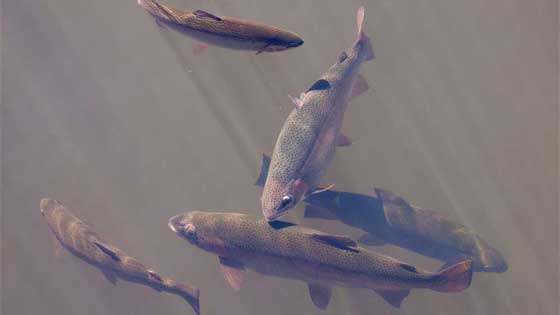Lake Trout Reproduction

Lake Trout are fall spawners and normally reproduce every second year from September to November in most parts of their range.
Temperature, light and wind are factors that contribute to the onset and duration of spawning activities.
Spawning begins when water temperatures fall to 10°C/50°F and lower.
Lake Trout spawn on offshore shoals, near shorelines and points near islands exposed to the prevailing winds. The substrate is a combination of broken rubble and edged rocks 3-15 cm/1-6 inches in diameter.
Deep Water
As their name implies they spend most of their life in lakes. They prefer deep water and will usually go as deep as the lake allows in the summer months only going shallow for food.
However most lakes in the Arctic are shallow unlike the Great Lakes. Although these waterways are more shallow, they’re a lot colder during the summer months.
Spawning in Shallow Water
Spawning always takes place in shallow water. This is required to ensure the survival of their young. While Lake Trout will actually eat their own kind on occasion, little is known as to if they will actually eat their own young.
Like all Charr, Lake Trout spawn in the fall months. This can happen as early as late summer in September and usually goes until late October.
While Lake Trout don’t actually build nests but they do prepare an area by cleaning the rocks and pebbles where the eggs will be laid. This cleaning is the responsibility of the male lake trout that gets to the spawning group several days before the female arrives. Cleaning is performed by using the trout’s snout and fins.
Death After Spawning?
Unlike other fish species, the Lake Trout doesn’t die after spawning. The Lake Trout can live up to 30 years, but average 20 years if there is little human interaction through construction or angling.
The longer they live, the bigger they grow.
It’s rumored that a 120 pound/54 kg Lake Trout was caught in the Great Lakes in 1818. We give this little credibility due to the nature of fish stories to double the size of fish caught.
However it’s not completely out of the realm of possibility as a 102lb Lake Trout was caught in the Northwest Territories in 1961.



